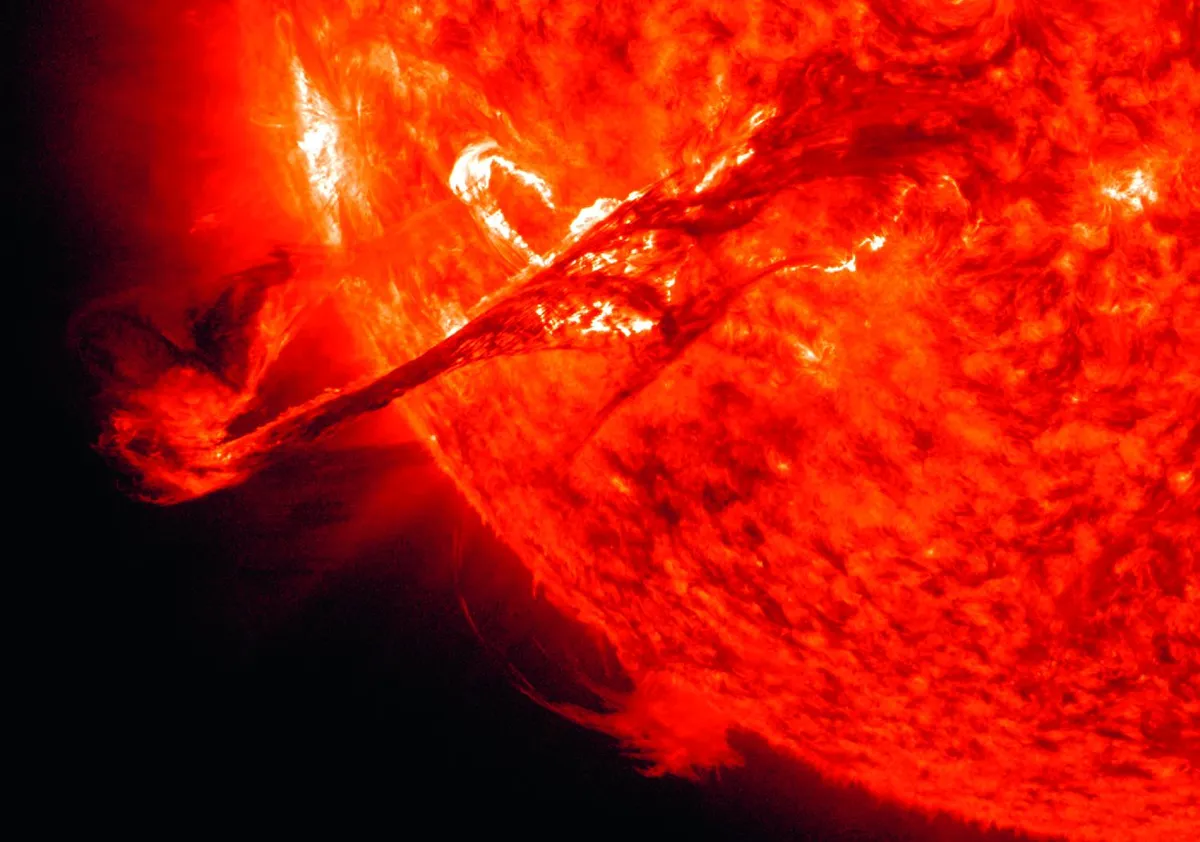You'll often hear the Sun described as 'on fire' or 'burning', but in reality that's not what's going on at all.
The idea that the Sun is somehow burning has been around since ancient times.
More on the Sun

The Sun’s heat and light were often attributed to molten metal or burning coal; in other words, it was thought that the Sun was essentially on fire.
But, armed with new knowledge of chemistry and thermodynamics, 19th-century scientists realised that no form of chemical energy was sufficient to fuel the Sun for more than a few thousand years.

So what is going on at the Sun?
Instead of chemically combining with oxygen, like carbon does when coal is burnt, the Sun’s fuel is undergoing thermonuclear reactions.
So rather than burning some sort of fuel, most of the Sun's energy is produced by the fusion of hydrogen into helium deep in the Sun’s core, where temperature and pressure are huge.

but doesn't that mean the Sun is in fact using up some sort of fuel to keep it going?
As we know from a process like keeping a fire going, that fuel source has to be replenished or the fire goes out.
So what about the Sun, then?

Astronomers calculate the Sun is losing about 4.26 million tonnes of mass every second due to fusion (140 quadrillion tonnes per year).
However, since the Sun’s mass is about 2 octillion tonnes, this is only 0.000000007% of the Sun’s total mass.
So even at the end of its life, in about five billion years, the Sun will still have 99.966% of its current mass.
Do you have a question about space an astronomy? Get in touch via contactus@skyatnightmagazine and it could be answered in a future issue of BBC Sky at Night Magazine.

